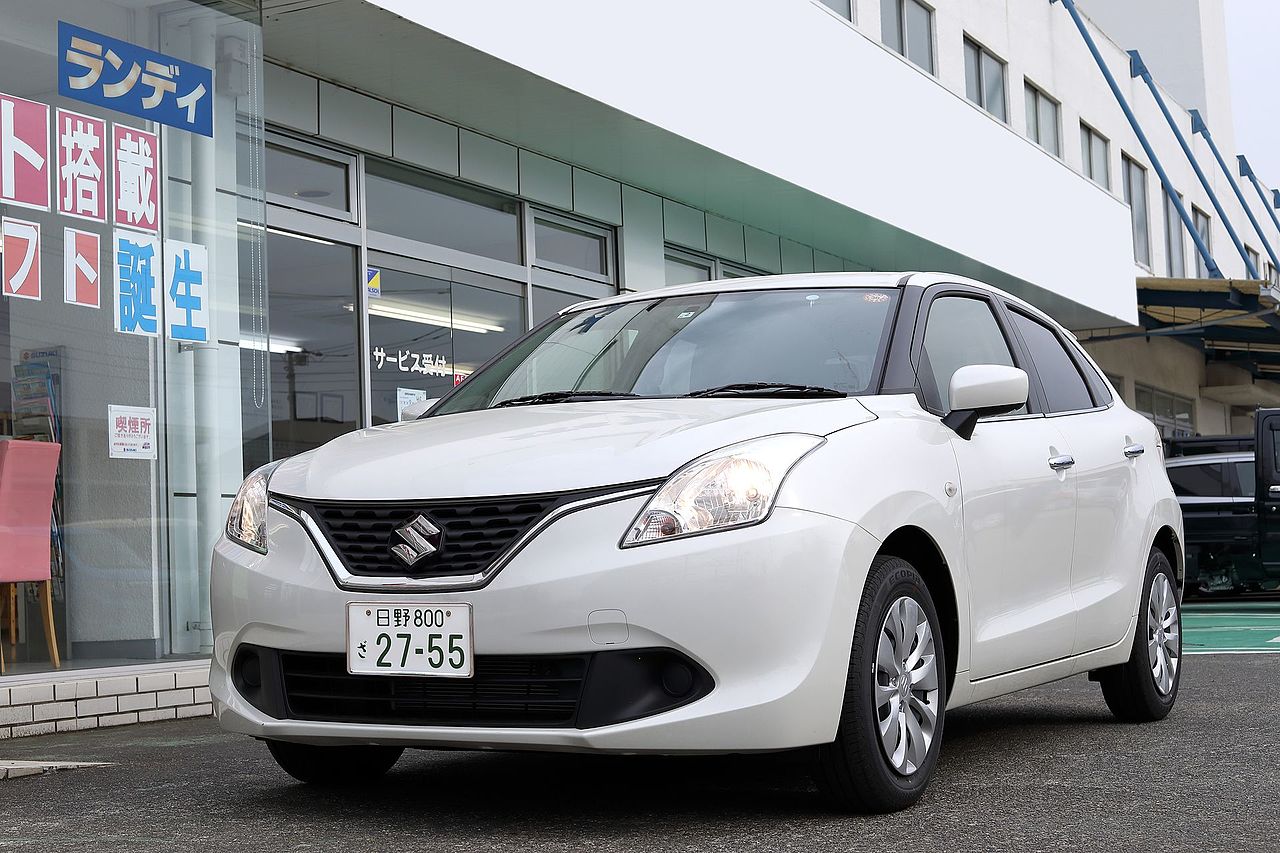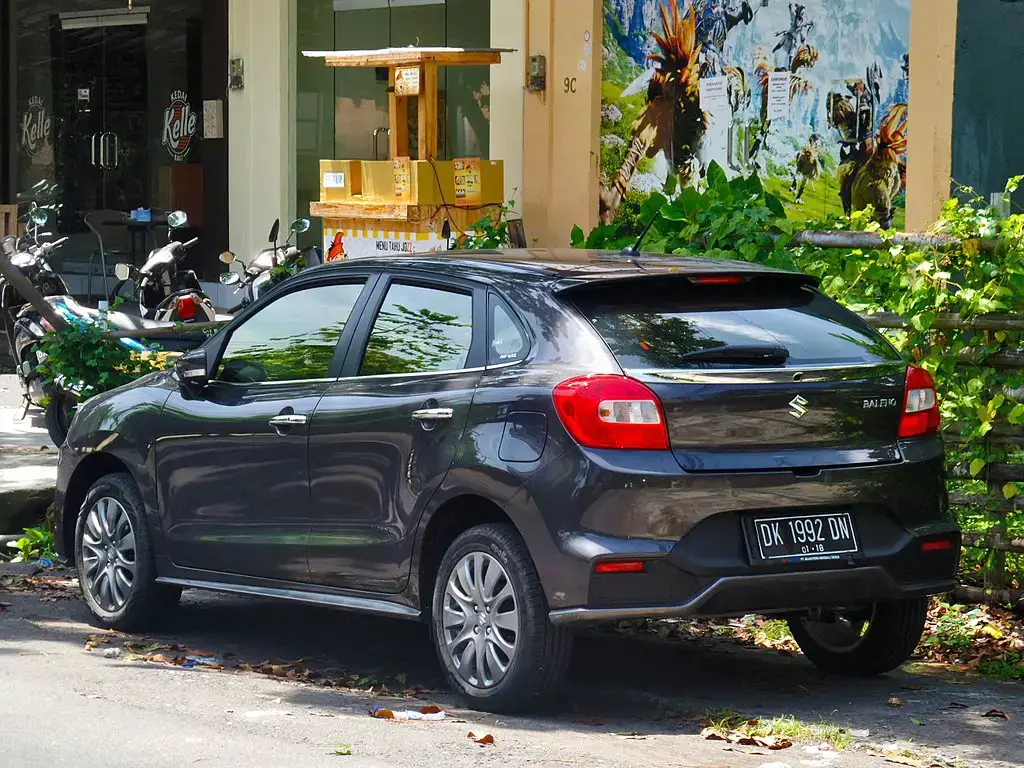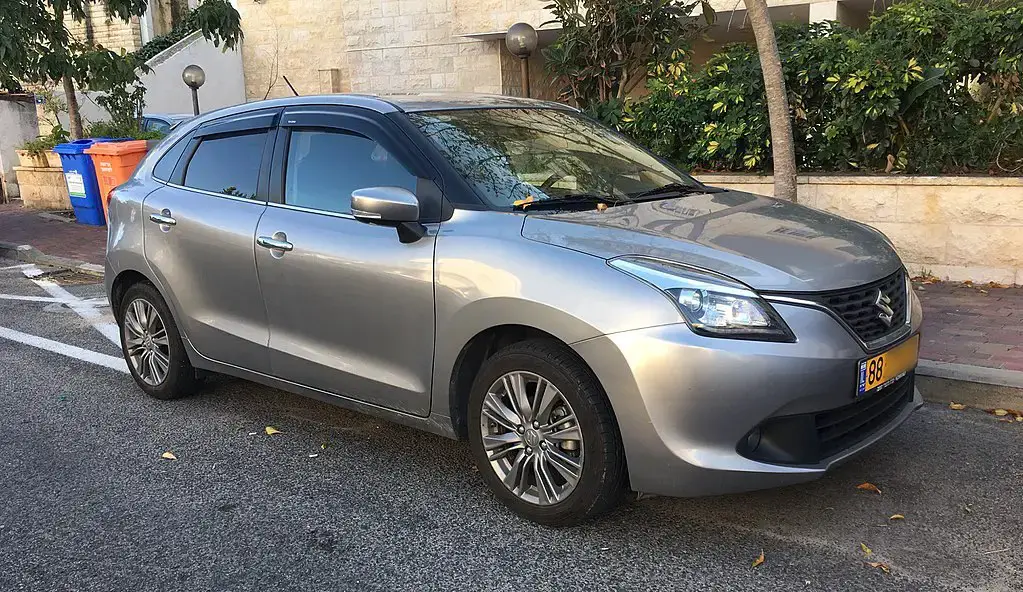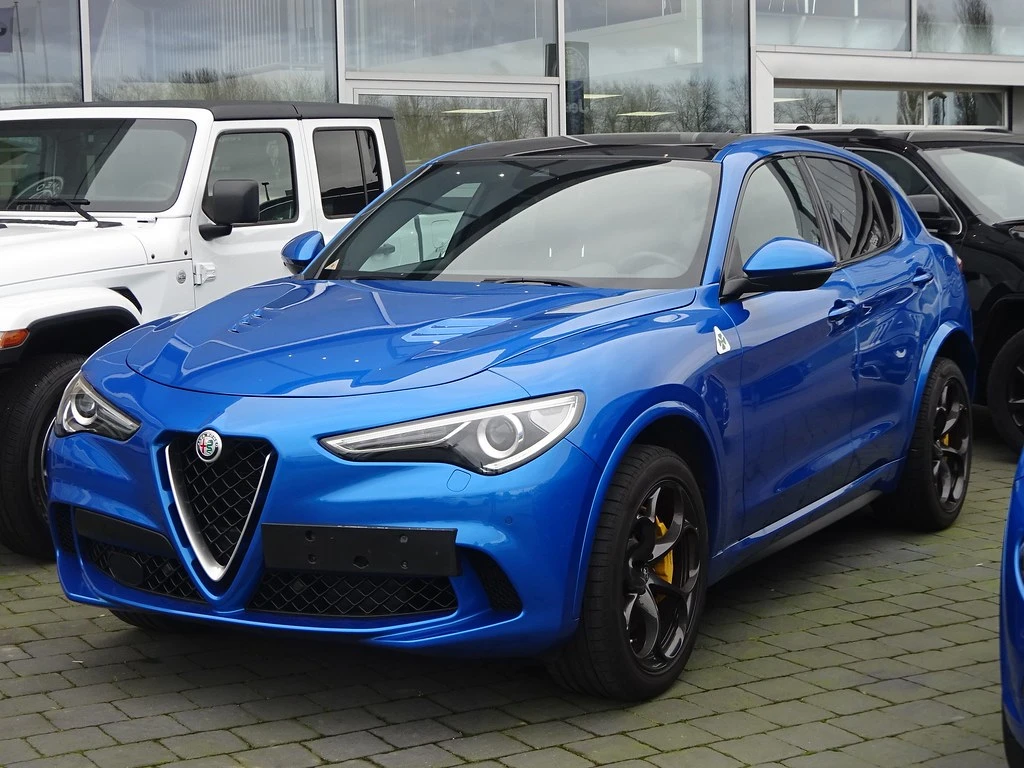Review: Suzuki Baleno II ( 2015 – 2020)

If the Mitsubishi Lancer is the European Camry, the Suzuki Baleno II is the Asian Dacia Sandero. Or you can look at it as a more practical, mellowed out and cheaper Swift.
Which nobody bought, sadly. Seriously, if you go and look through the ads, the Suzuki Baleno II is a more obscure car than my adult film preferences, and trust me, unless you come with a rope, Old Spice Deo stick, Boney M and an open mind, don’t bother showing up.
The Suzuki Baleno II is the second Suzuki attempt by that name in Europe, but it remains a very obscure car over here. In fact, it’s so obscure that at the time I wrote this literal calamity there were only 78 cars for sale on mobile.de, and 45 on autotrader. I might aswell just call the Food Network and ask if they have a Suzuki Baleno II for sale, the chances of finding one are the same as on autotrader.

So why buy a Baleno? Simple. The Baleno is part of Suzuki’s compact range and is the largest of the Baleno – Swift – Ignis trio. Basically, the Ignis was the cheapest, the Swift was the sportiest and the Baleno was the most practical. And it really is practical, the Baleno having a 30% bigger boot than the Swift and it’s even bigger than the Polo’s (unless you fold down the back seats because there it’s inferior to the Polo just like Manu Chao is inferior to Ruben Gonzalez.
And it’s also cheaper than a Swift and comes with shared technology with the Swift, in other words, it’s a very reliable and simple car, great for the urban madness. And that’s probably why you don’t even see cars for sale much because they’re bought by private individuals who refuse to sell them anytime soon and then to keep them and pass them on as heirlooms. If you have a car of questionable quality the you see billions and billions of relatively new cars for sale – see the Mazda CX-5 in the ads. But the good and reliable cars which are mostly bought by private buyers and shunned by fleets, those are rare and don’t depreciate much. And that’s pretty much the story with the Suzuki Baleno II, and as a bonus, it’s the kind of car bought by people over 800 years old, who buy them new, drive them a little, and keep them for life. Or driving schools. And this is why it’s inexplicably overpriced on the used market.

Suzuki Baleno II engines
Petrol
- 1.0 K10C Boosterjet Turbo of 112 horsepower – Such a great small engine. Such shame that in Europe it was available until 2019 after which it was retired by emissions rules, the 1.0 BoosterJet engine was the most powerful engine on the Baleno II and well worth buying. Plus it has no specific issues. And it’s the only one that came with an proper, modern Aisin 6 Speed automatic. So enjoy it, all of you non-europeans, you lucky bas….
- 1.2 K12M of 83 horsepower – By far the most popular engine because the Baleno was a low-cost car to buy (too expensive on the used market) and buyers were trying to keep the purchase price as low as possible and for many people, those extra 22 horsepower on the 1.0 BoosterJet don’t make enough of a difference to be worth it. And I understand them since the Baleno is a city car and 83 horsepower is plenty. It’s one of the last of it’s kind, being an naturally aspirated 4 cylinder petrol engine and it had few rivals back in it’s launch day, namely the 1.2 Kappa from Hyundai / Kia and some oily boys from Europe.
- 1.25 K12C of 90 hoursepower – After the K12M was retired, the Mild Hybrid craze took over and so Suzuki launched it’s all new 1.25 K12C engine, aided by various hybrid electric flavours. There is nothing new to report reliability wise, only that it uses an CVT automagic, which is better for city driving than an dual clutch but worse than an good ol’ torque converter.
- 1.4 K14B of 95 horsepower – Much like it’s K12M cousin, this engine is one of the last naturally aspirated 4 cylinder petrol engines from the modern era. Sure, it failed modern emissions classes so it got retired, but if you want cheap and cheerful but not so cheap as the 1.2 K12M, then this is the engine to go for.
Diesel
1.3 DDiS D13A of 75 horsepower – As with the Swift – Ignis – Baleno trio, the Indian Suzuki / Maruti Baleno also had the legendary 1.3 Multijet diesel engine available. Used widely in the automotive industry, and the 75 horsepower version being used on the Opel / Vauxhall Corsa, Fiat Panda, Suzuki Jimny and many others. Great engine, even if in this guise it’s strangled by the particle filter as if it’s paying for it. So don’t use it to drive around town too much.

Suzuki Baleno II Common Issues
- It’s a Suzuki so there has to come a complementary moment when we talk about interiors that are poor in quality, color, or enthusiasm. Really, it’s just a sea of grey plastic that squeaks.
- Welcome to 2021 where you don’t have a diesel engine option. Sure, that’s true of many manufacturers, and many models (including Naomi Campbell which is another model which comes without a diesel engine), but in the case of the Suzuki Baleno II you should know that there’s the option of a Fiat-sourced 1.3 diesel, just exclusively for India. So you’re left with some petrol engines which tend to be abit thirsty for the amount of muscle they put out.
- It’s an Asian car so there must come a complementary moment when we talk about poor paint quality. Seriously, it’s thinner than my wallet on the day after payday.

Suzuki Baleno II Verdict
It has an torque converter automatic gearbox in most cases so it’s reliable. It has a bigger boot than the Polo. It’s a reliable car. It’s cheap to buy and maintain. But good luck finding a used one, because for the time being the Suzuki Baleno II will stay with the original owner, who will most likely leave it as a heirloom. So until the Baleno owners start dying off in 500 years or so, I invite you to listen to some more of Radio 1’s Dance Anthems. But if you find one, I recommend you test drive it, short list it and maybe even buy it.
What engines do I recommend? For petrol, I recommend the 1.2 petrol engine if you’re afraid of new tech and the 1.25 MHEV if you’re not afraid. And if you’re a die hard diesel fan, then the 1.3 M13A might be the last mohican in it’s segment.
Similar Articles

Review : Nissan Juke F16 (2019 – present)

Review : Alfa Romeo Stelvio 949 ( 2017 – prezent )

Review : Nissan Juke F15 (2011 – 2019)
Write an answer
- Review : Nissan Juke F16 (2019 – present) 23 February 2025
- Review : Alfa Romeo Stelvio 949 ( 2017 – prezent ) 15 March 2025
- Review : Nissan Juke F15 (2011 – 2019) 23 February 2025
- April 2025
- March 2025
- February 2025
- January 2025
- December 2024
- November 2024
- October 2024
- August 2024
- July 2024
- June 2024
- May 2024
- April 2024
- March 2024
- February 2024
- January 2024
- December 2023
- November 2023
- October 2023
- September 2023
- August 2023
- July 2023
- June 2023
- May 2023
- April 2023
- March 2023
- February 2023
- January 2023
- December 2022
- November 2022
- October 2022
- September 2022
- August 2022
- July 2022
- June 2022
- May 2022
- March 2022
- April 2021
- January 2021
- December 2020
- November 2020
- October 2020
- September 2020
- August 2020
- July 2020
- March 2020